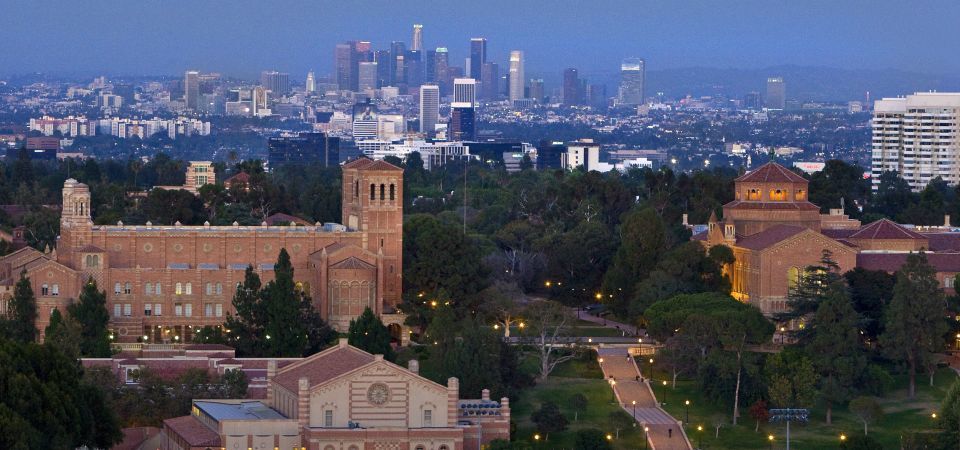Week 1: Two cultures
 While written back in 1959, C.P. Snow's speech on the emergence of two academic cultures and the necessity to bridge the gap between the two could not be more relevant today. As an economics major at UCLA I have seen how universities dole out increasingly specialized degrees without emphasizing a well-rounded liberal education, and am able to observe changing job markets that are increasingly looking for people who are both technically specialized and able to think creatively. It is clear that as universities continue to do this, society as a whole will be far worse off for it.
While written back in 1959, C.P. Snow's speech on the emergence of two academic cultures and the necessity to bridge the gap between the two could not be more relevant today. As an economics major at UCLA I have seen how universities dole out increasingly specialized degrees without emphasizing a well-rounded liberal education, and am able to observe changing job markets that are increasingly looking for people who are both technically specialized and able to think creatively. It is clear that as universities continue to do this, society as a whole will be far worse off for it.Snow attributes a lot of this divide to the education system. In addition, Sir Ken Robinson's talk in the RSA animate video discusses how schools are not only failing to properly provide a well-rounded education for students, but also actively destroying their ability for divergent and creative thinking, as illustrated in the paperclip study he discusses.
 What surprises me most about the education system's failure to properly teach humanities and creative thinking is that the value of being savvy in both science and art is well respected. Take Steve Jobs and the philosophy behind Apple for example: in a science-oriented industry like computing, Jobs was able to differentiate Apple by making its products the best-looking on the market, and revolutionized word processing programs by introducing different font types. This divide was emphasized in the "mac vs pc" ads that showed mac users as young, creative people while showing pc users as old, unimaginative professionals. In today's economy, marketers have to mix the science of psychology with great visual ads, app developers have to know both how to code the app as well as how to design it to make it aesthetically pleasing, and even musicians have to understand how to use computer programs to manipulate audio wavelengths and create accompanying visuals. Universities and public schools are way behind the curve in mixing science and art, and if we as a society want to keep people prepared for the future, it's essential that we reverse this trend.
What surprises me most about the education system's failure to properly teach humanities and creative thinking is that the value of being savvy in both science and art is well respected. Take Steve Jobs and the philosophy behind Apple for example: in a science-oriented industry like computing, Jobs was able to differentiate Apple by making its products the best-looking on the market, and revolutionized word processing programs by introducing different font types. This divide was emphasized in the "mac vs pc" ads that showed mac users as young, creative people while showing pc users as old, unimaginative professionals. In today's economy, marketers have to mix the science of psychology with great visual ads, app developers have to know both how to code the app as well as how to design it to make it aesthetically pleasing, and even musicians have to understand how to use computer programs to manipulate audio wavelengths and create accompanying visuals. Universities and public schools are way behind the curve in mixing science and art, and if we as a society want to keep people prepared for the future, it's essential that we reverse this trend.
Sources:
Snow, C. P. “Two Cultures and the Scientific Revolution.” Reading. 1959. New York: Cambridge UP, 1961. Print.
Vesna, Victoria. “Toward a Third Culture: Being in Between.” Leonardo 34.2 (2001): 121-25. Web.
Kelly, Kevin. "The Third Culture" Science 13 February 1998: Vol. 279 no. 5353 pp. 992-993. Web.
Brockman, John. The Third Culture. N.p.: n.p., 1995. Print.
YouTube. "RSA ANIMATE: Changing Education Paradigms". Online Video Clip.14 Oct, 2010


I like how you put an importance of being “savvy in both science and art” and how useful of an asset it is when you apply it to the real world. The Apple analogy really helped me realize the significance of joining the two cultures that C.P. Snow had talked about. I agree that universities are slow when it comes to joining science and art as shown by the physical separation on campus here at UCLA. What do you think would be a good step to join humanities and science on campus at UCLA specifically?
ReplyDelete